警报
警报
练习类型
船
徒步
非常容易
自行车
汽车
Presentation
地图
步骤
兴趣点
Cirkwi 简报
评级和评论
周围的看点
巴黎桥上的雕像

信用 : Remi Jouan
Cirkwi 简报
发现巴黎的历史桥梁雕像:独特之旅
巴黎的桥梁上镶嵌着讲述城市历史故事的雕像,创造出一次无与伦比的步行体验。由Balades Fluviales Fabienne Lemoine Fondateur提议,这条线路不仅是一次散步,而是一段穿越时空的旅程,揭示巴黎艺术和文化宝藏,这些宝藏来自桥梁建设时代,那时建桥既注重美感又考虑实用性。走入这条风景如画的路线,你将踏上一次探索之旅,通过它的雄伟壁垒与这座城市的灵魂相连。感受塞纳河的微风,让这些静默的雕像引领你的发现之旅。
路线的技术概述
这条路线总长8.08公里,海拔变化在27到38米之间,形成了一种有趣的起伏,总共的正向海拔高度为125米。这条线路专为步行设计,为参与者提供了一次引人入胜但身体适中的旅程,适合各种健身水平的人参与。Balades Fluviales提出的路径通过巴黎的桥梁上的雕像引领探险者穿越历史和建筑的奇迹,呈现出城市装饰的一面迷人之处。
桥梁雕像探险者的季节提示
任何时候都可以探索巴黎的桥梁雕像,但每个季节都有其特点。春天,盛开的花朵为背景增添了风景如画的美感,但也要预计偶尔的阵雨;时刻随身携带雨伞。夏天是理想的季节,但可能会很拥挤;早晨散步更好。秋天给景色带来了金色的色调,非常适合拍照,不过傍晚的光线很快消失;请做相应的计划。冬天虽然寒冷,但人流较少,提前保暖非常重要。在安全方面,始终走人行道,注意湿滑的地面。
法国的文化心脏
巴黎位于法兰西岛地区,不仅是法国的首都,也是世界文化和历史的重要象征。自19世纪以来,巴黎的桥梁既具有艺术性又有工程奇迹,它们不仅连接了两岸,也贯穿了时光。每个雕像讲述着巴黎悠久的历史,从守护圣徒的故事到重大事件。探索这些桥梁使人能够穿越这座城市的心脏,理解它的发展和持久的魅力。
巴黎游客的气候洞察
巴黎:温和的大陆性气候等待着您。巴黎的气候温和,夏季凉爽,冬季寒冷。最适合游览的月份是4月至6月和9月至10月,这段时间的天气条件最适合户外探索。在这些时期,平均气温在15°C至25°C之间,为桥梁雕像之旅提供了舒适的氛围。夏季的气温可能升至30°C,可能会影响中午的户外活动。冬季虽然更冷,但很少出现0°C以下的骤降,但建议根据不同的气候条件进行衣物携带。
巴黎的桥梁上镶嵌着讲述城市历史故事的雕像,创造出一次无与伦比的步行体验。由Balades Fluviales Fabienne Lemoine Fondateur提议,这条线路不仅是一次散步,而是一段穿越时空的旅程,揭示巴黎艺术和文化宝藏,这些宝藏来自桥梁建设时代,那时建桥既注重美感又考虑实用性。走入这条风景如画的路线,你将踏上一次探索之旅,通过它的雄伟壁垒与这座城市的灵魂相连。感受塞纳河的微风,让这些静默的雕像引领你的发现之旅。
路线的技术概述
这条路线总长8.08公里,海拔变化在27到38米之间,形成了一种有趣的起伏,总共的正向海拔高度为125米。这条线路专为步行设计,为参与者提供了一次引人入胜但身体适中的旅程,适合各种健身水平的人参与。Balades Fluviales提出的路径通过巴黎的桥梁上的雕像引领探险者穿越历史和建筑的奇迹,呈现出城市装饰的一面迷人之处。
桥梁雕像探险者的季节提示
任何时候都可以探索巴黎的桥梁雕像,但每个季节都有其特点。春天,盛开的花朵为背景增添了风景如画的美感,但也要预计偶尔的阵雨;时刻随身携带雨伞。夏天是理想的季节,但可能会很拥挤;早晨散步更好。秋天给景色带来了金色的色调,非常适合拍照,不过傍晚的光线很快消失;请做相应的计划。冬天虽然寒冷,但人流较少,提前保暖非常重要。在安全方面,始终走人行道,注意湿滑的地面。
法国的文化心脏
巴黎位于法兰西岛地区,不仅是法国的首都,也是世界文化和历史的重要象征。自19世纪以来,巴黎的桥梁既具有艺术性又有工程奇迹,它们不仅连接了两岸,也贯穿了时光。每个雕像讲述着巴黎悠久的历史,从守护圣徒的故事到重大事件。探索这些桥梁使人能够穿越这座城市的心脏,理解它的发展和持久的魅力。
巴黎游客的气候洞察
巴黎:温和的大陆性气候等待着您。巴黎的气候温和,夏季凉爽,冬季寒冷。最适合游览的月份是4月至6月和9月至10月,这段时间的天气条件最适合户外探索。在这些时期,平均气温在15°C至25°C之间,为桥梁雕像之旅提供了舒适的氛围。夏季的气温可能升至30°C,可能会影响中午的户外活动。冬季虽然更冷,但很少出现0°C以下的骤降,但建议根据不同的气候条件进行衣物携带。
自动生成。
IGN 地图
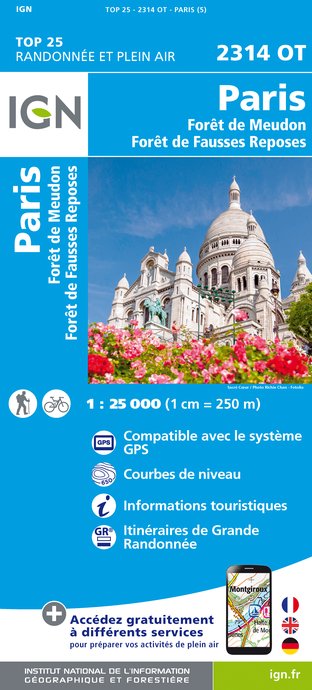
2314OT - PARIS FORÊT DE MEUDON FORÊT DE FAUSSES REPOSES
编辑器 : IGN
收藏 : TOP 25 ET SÉRIE BLEUE
梯子 : 1:25 000
13.90€

119 PARIS SENS PNR DU GÂTINAIS FRANÇAIS
编辑器 : IGN
收藏 : TOP 100
梯子 : 1:100 000
8.40€
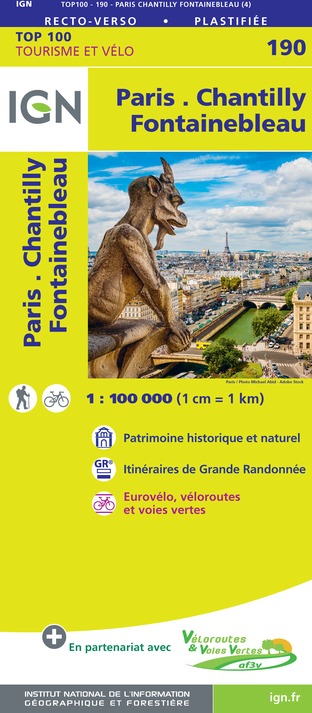
190 PARIS CHANTILLY FONTAINEBLEAU
编辑器 : IGN
收藏 : TOP 100
梯子 : 1:100 000
8.40€
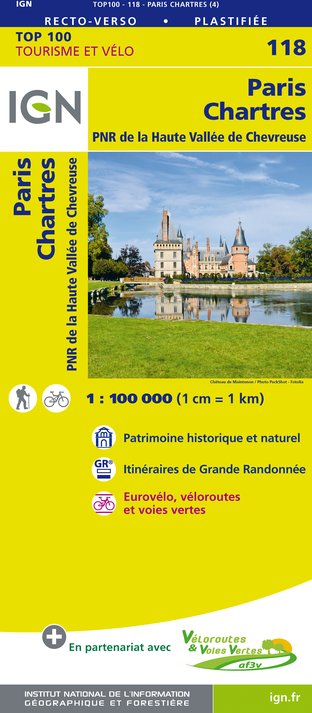
118 PARIS CHARTRES PNR DE LA HAUTE VALLÉE DE CHEVREUSE
编辑器 : IGN
收藏 : TOP 100
梯子 : 1:100 000
8.40€
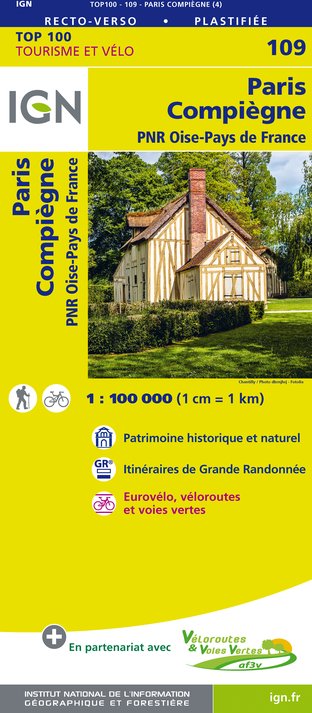
109 PARIS COMPIÈGNE PNR OISE-PAYS DE FRANCE
编辑器 : IGN
收藏 : TOP 100
梯子 : 1:100 000
8.40€

108 PARIS ROUEN BEAUVAIS PNR DU VEXIN FRANÇAIS
编辑器 : IGN
收藏 : TOP 100
梯子 : 1:100 000
8.40€

D75-95 ÎLE-DE-FRANCE OUEST
编辑器 : IGN
收藏 : CARTES DÉPARTEMENTALES IGN
梯子 : 1:150 000
5.90€

D77 SEINE-ET-MARNE
编辑器 : IGN
收藏 : CARTES DÉPARTEMENTALES IGN
梯子 : 1:150 000
5.90€
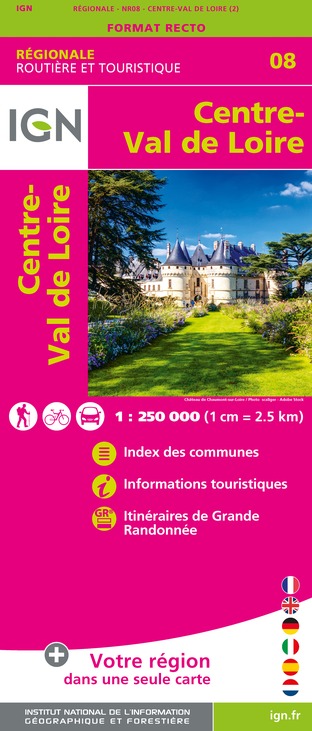
NR08 CENTRE-VAL DE LOIRE
编辑器 : IGN
收藏 : CARTES RÉGIONALES IGN
梯子 : 1:250 000
6.80€

NR03 ÍLE DE FRANCE
编辑器 : IGN
收藏 : CARTES RÉGIONALES IGN
梯子 : 1:250 000
6.80€

NR01 HAUTS-DE-FRANCE
编辑器 : IGN
收藏 : CARTES RÉGIONALES IGN
梯子 : 1:250 000
6.80€
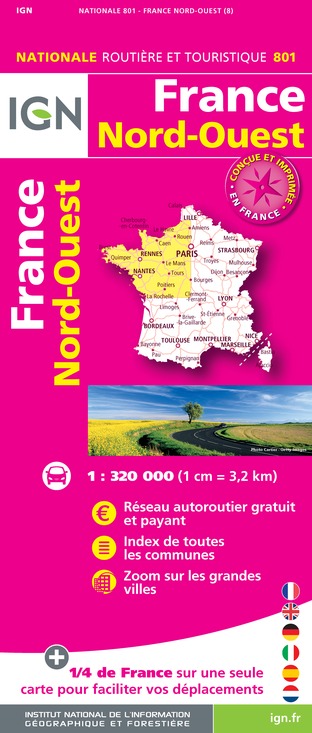
801 FRANCE NORD OUEST
编辑器 : IGN
收藏 : CARTES NATIONALES IGN
梯子 : 1:320 000
6.10€

EUROPE
编辑器 : IGN
收藏 : DÉCOUVERTE DES PAYS DU MONDE IGN
梯子 : 1:2 500 000
7.00€
技术信息
船
难度
未指定
距离
8.1 km
练习类型
船
徒步
非常容易
自行车
汽车
显示更多信息
高程剖面
起点
75004
Paris
Lat : 48.8506677Lng : 2.3555267
兴趣点
数据作者
评级和评论
周围的看点










